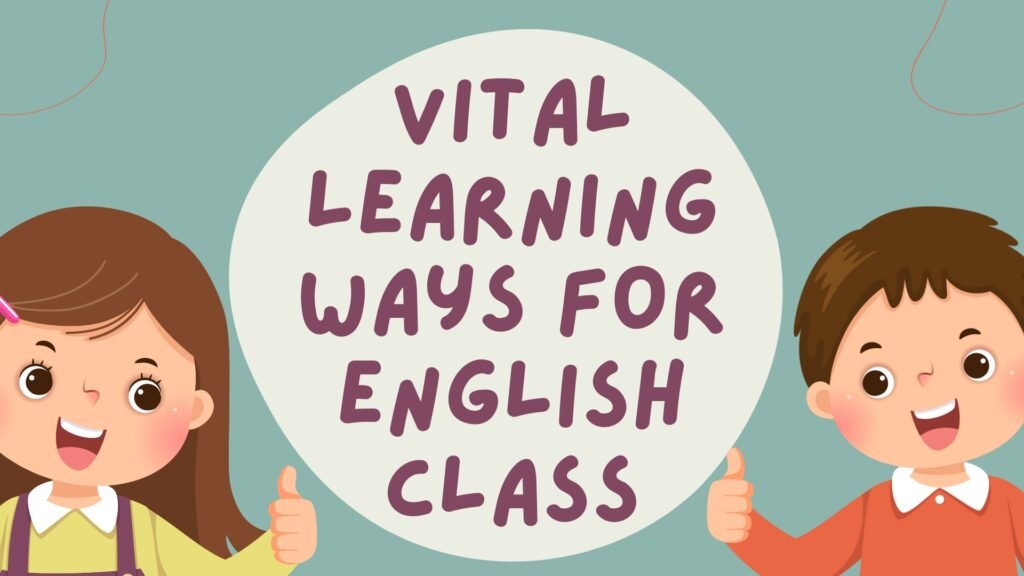
Vital Learning Ways for English Class
In today’s ever-changing world of education, it is vital to engage students using new and creative methods. Activity-based learning (ABL) strategies are a great way to make English classes more interactive and fun. This blog will look at different ABL strategies that teachers can use to boost student engagement and learning results.
Understanding Activity-Based Learning
Activity-based learning is a teaching method that focuses on active participation and hands-on experiences. Unlike traditional teaching methods, ABL encourages students to interact with the material through different activities. This approach meets the needs of various learning styles, making it effective for all types of students. Research shows that students remember information better when they are actively involved in their learning. As a result, ABL not only makes learning fun but also greatly improves understanding and retention of information.

Role-Playing and Simulations
Role-playing is a strong ABL strategy that helps students get into different characters or situations. This method is especially helpful when teaching literature or language skills. For example, students can act out scenes from a play or a book, which helps them better understand the characters’ motivations and themes.
Simulations can also be used to create real-life situations where students need to use their language skills. For instance, having a mock job interview or a debate on a relevant topic encourages students to apply what they have learned in a practical way. These activities help improve communication skills and build confidence in using the English language.
Group Projects and Collaborative Learning
Group projects are a great way to encourage teamwork and collaboration among students. When students work in groups, they can share ideas, divide tasks, and learn from each other. This method helps them understand the subject better and develops important social skills.
Teachers can assign projects that ask students to research a topic, create a presentation, or write a story together. These activities encourage students to actively engage with the content and improve their critical thinking skills. Furthermore, group work teaches students to respect different opinions and work towards a shared goal.
Interactive Games and Quizzes
Adding games and quizzes to the curriculum can greatly increase student engagement. Educational games can be made to strengthen vocabulary, grammar, and comprehension skills. For instance, word puzzles, bingo, or trivia games can make learning both fun and competitive.
Quizzes can also be turned into interactive activities where students work in teams. This not only encourages them to study but also lets them learn from their classmates. By making assessments enjoyable, students are more likely to remember what they learned and develop a positive outlook on learning.
Need some tips about demo class? Click here or check out our website to get more details.
Creative Writing and Storytelling
Creative writing and storytelling are great ways to encourage imagination and improve language skills. Teachers can ask students to write short stories, poems, or personal narratives. This activity helps students express themselves creatively while also practicing their writing skills.
Storytelling can also be done as a group activity where students work together to create a story, with each student adding their own part. This not only improves their storytelling skills but also encourages listening and teamwork. Additionally, sharing stories in front of the class helps build confidence and public speaking skills.
Technology Integration
In today’s digital world, using technology in the classroom can improve activity-based learning. Many online tools and platforms can help create interactive learning experiences. For example, using educational apps for language practice, making digital presentations, or having virtual discussions can make lessons more interesting.
Additionally, technology can support different learning styles. Visual learners can benefit from videos and infographics, while auditory learners can enjoy podcasts and discussions. By using technology, teachers can create a more inclusive and exciting learning environment for all students.
Conclusion: Your Journey to Inspired Teaching
As you look into these activity-based learning strategies, think about how they can fit into your teaching style. Each method has unique benefits that can boost student engagement and improve learning outcomes. Remember, the goal is to create an interactive and supportive environment where students feel inspired to learn.
Join our WhatsApp channel to get more updates about teaching jobs. Click here.
By using these strategies, you can turn your English class into a lively space for exploration and creativity. As you start this journey, consider how these activities might impact your students. They will not only learn English but also gain important life skills that will help them beyond the classroom.
Take the first step today—try one of these strategies in your next lesson and see your students thrive!









Post Comment